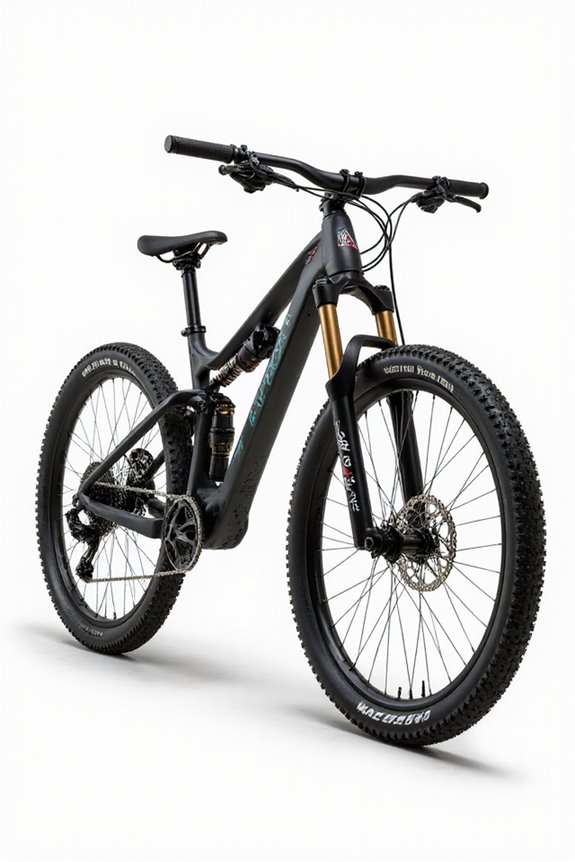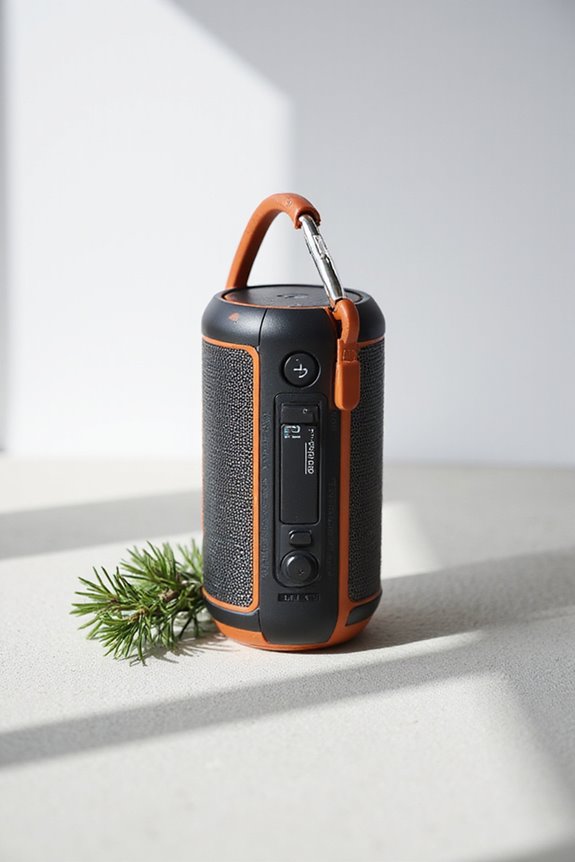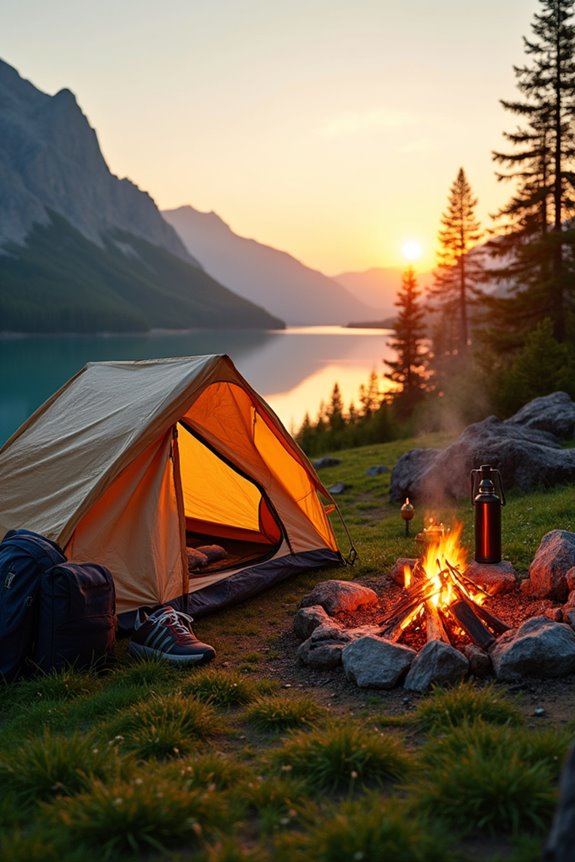When choosing a mountain bike for trail riding, think about the terrain you’ll tackle. Options range from rocky paths to smooth loam. A versatile bike with a light frame and adjustable suspension is key for both climbs and descents. Look for wider tires, ideally 2.3” to 2.6”, for better grip. Don’t forget about the geometry, brake systems, and gearing too! Every detail counts in crafting your perfect ride, so get ready to hit those trails and uncover what’s next!
Key Takeaways
- Consider the bike’s versatility, balancing uphill efficiency and downhill stability, to handle various trail types effectively.
- Evaluate suspension travel; choose shorter travel for climbs and longer travel for descents to match your riding style.
- Select appropriate tire width (2.3” to 2.6”) for optimal traction and speed based on trail conditions.
- Research different bike models, comparing specifications, features, and rider reviews to make an informed decision.
- Test ride multiple bikes to ensure comfort and fit, and consult local biking groups for firsthand recommendations.
Understanding Trail Riding Terrain
When it comes to mountain biking, understanding the terrain is like having a secret map to adventure. The trail surface can make or break a ride. For instance, rock gardens demand sharp bike handling skills, while loam soil offers a smooth, grippy experience. Slickrock may seem thrilling but can turn slippery when wet! Riders often encounter technical features like man-made obstacles, which challenge balance and control. Those who dare tackle blind drops or rock rolls find both excitement and risk awaiting them. From the narrow confines of singletrack to the wider doubletrack, each trail type adds its own flavor. Ultimately, knowing how to navigate these varied surfaces and features is essential for a successful mountain biking adventure.
The Importance of Bike Versatility
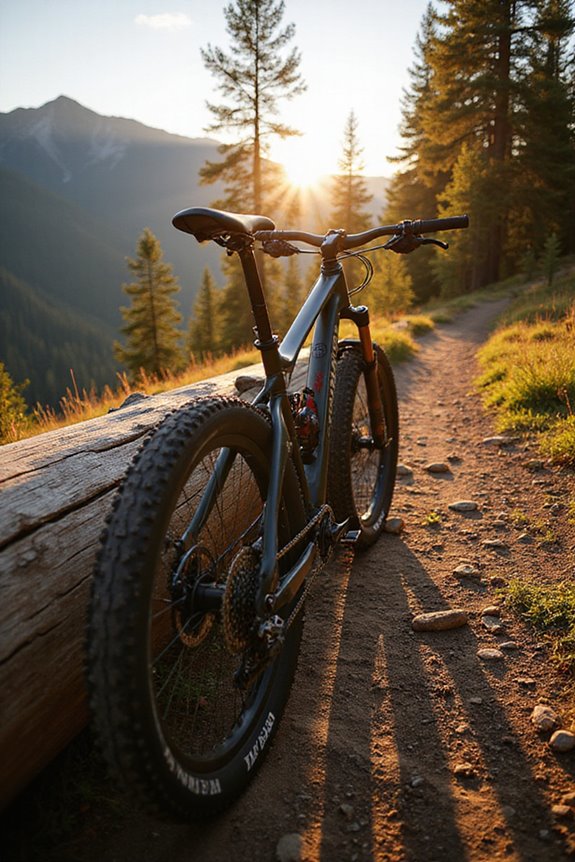
While many riders dream of conquering the most challenging trails, the true magic lies in the versatility of their mountain bike. A bike that balances downhill stability and uphill efficiency opens up a world of possibilities, allowing riders to tackle everything from flowy singletracks to steep climbs. With lighter frames made from aluminum or carbon, these bikes reduce fatigue on long rides, making each adventure more enjoyable. Riders should also consider maintenance tips, guaranteeing their bike remains adaptable to different terrains. Usability factors like adjustable suspension and geometry play crucial roles in how well a bike performs across various conditions. Ultimately, a versatile bike guarantees that every ride is an exciting exploration, no matter the trail ahead.
Key Features of Trail Bikes
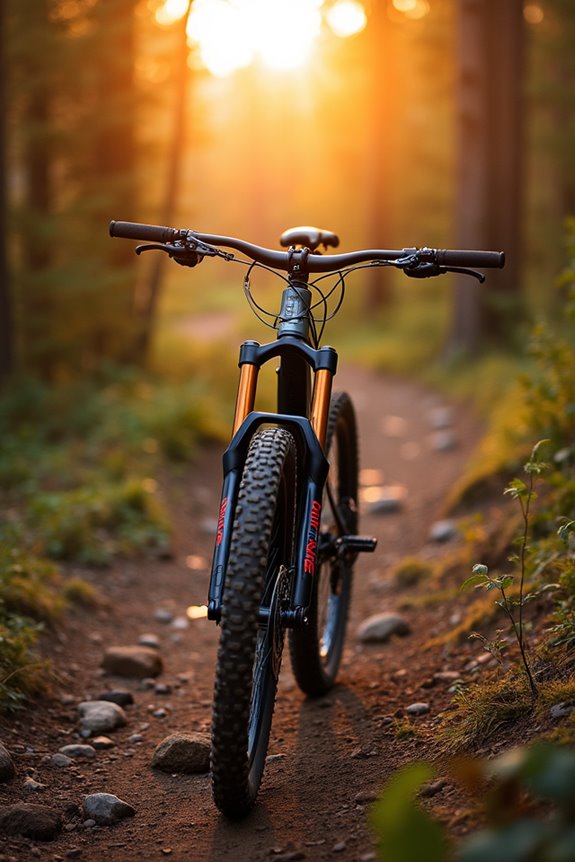
A mountain bike isn’t just a bike; it’s a ticket to adventure, and understanding the key features of trail bikes can make all the difference in the ride. First off, frame materials like aluminum and carbon fiber play a vital role; aluminum offers durability at a lower cost, while carbon fiber is the lightweight champion. Now, let’s talk geometry—trail bikes have a longer reach and steep seat tube angles for climbing efficiency and control on those gnarly descents. And don’t forget about suspension types; a good balance of travel is essential for tackling rough terrains. With wider handlebars and shorter stems, handling becomes a breeze. Ultimately, these features transform each ride into an exhilarating journey through nature’s playground.
Suspension Travel Explained
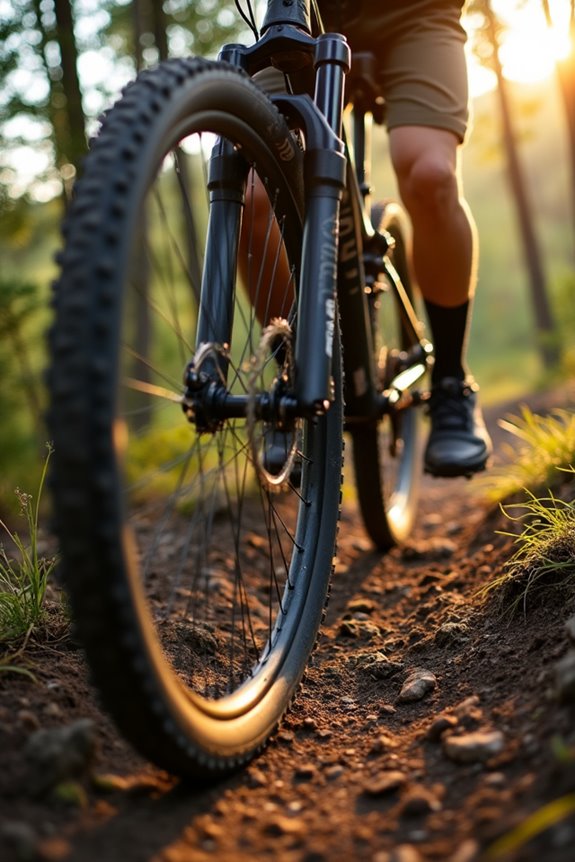
Suspension travel can make or break a mountain biking experience, especially when maneuvering the rugged terrain of a trail. It refers to the distance suspension moves before hitting full compression, measured in millimeters or inches. Different suspension types, like short travel under 120mm for smooth climbs, or long travel over 120mm for wild descents, cater to various riding styles. For instance, all-mountain bikes boast 120 to 160mm, striking a balance between control and versatility. Riders must consider their terrain and style; more travel for bumpy trails means better absorption of those gnarly rocks. However, too much travel can lead to inefficiencies. Ultimately, finding the right suspension travel is essential for a comfortable and controlled ride.
Choosing the Right Tire Width and Type
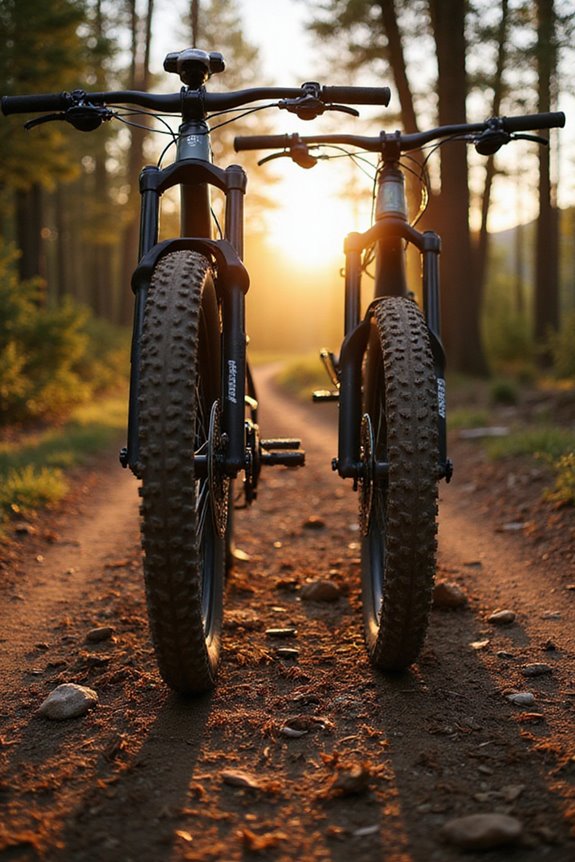
Choosing the right tire width and type can feel like traversing a maze, but it’s one of the most essential decisions for any mountain biker hitting the trails. For trail riding, widths between 2.3” and 2.6” strike a perfect balance between traction and speed. A wider tire can be your best friend on technical terrain, gripping the ground like a pro, while narrower tires are ideal for those smooth, speedy trails. Don’t forget tire pressure—proper inflation can greatly impact your ride. Tread patterns matter too; aggressive designs help with grip, while low-profile knobs can increase your speed. So, think about your riding style and the trails ahead, and choose wisely!
Assessing Bike Geometry for Comfort and Performance
When it comes to mountain biking, bike geometry plays a crucial role in how comfortable and confident a rider feels on the trails. Understanding reach and stack can make a world of difference; a long reach offers stability on steep descents, but too much can strain the back. On the flip side, a short reach feels agile yet can be unstable. Then there’s the head tube angle: a steeper angle helps with climbing, while a slacker one boosts stability on rough terrain. Riders can make geometry adjustments to suit their preferences, ensuring a personalized fit. The wheelbase length also contributes, as longer setups enhance stability while shorter ones improve agility. Ultimately, the right geometry transforms a ride from ordinary to extraordinary.
Evaluating Brake Systems for Safety
After getting a solid grasp on bike geometry, riders often find themselves eyeing the next critical component: the brake system. Choosing between hydraulic disc brakes and mechanical ones can be a game changer. Hydraulic advantages are hard to ignore; they offer superior brake modulation, enabling riders to apply just the right amount of pressure without that dreaded wheel lock-up. For those tackling steep trails, powerful four-piston calipers, like the SRAM Code RSC, deliver impressive stopping power and heat management. Plus, adjustable lever reach guarantees comfort for every hand size. Remember, well-maintained brakes translate to safer descents, so keep an eye on those pistons and fluid levels. Investing in reliable brakes can mean the difference between a thrilling ride and a white-knuckle experience!
Gearing Systems for Efficient Riding
How does one find the perfect gearing system for trail riding? First, consider the gear ratios; a wide cassette range, like 10-52t, is key for tackling those steep climbs and thrilling descents. SRAM and Shimano offer high-quality options, including electronic systems like SRAM AXS, which provide smooth, precise shifting. However, mechanical systems are often more reliable and budget-friendly. Riders can choose between a single chainring for simplicity and weight savings or a double chainring for more gear options, despite the added complexity. Keep in mind the durability factors of components and any compatibility issues that might arise with different groupsets. Ultimately, understanding these elements can lead to a more enjoyable and efficient riding experience on the trails.
Additional Features to Consider
Finding the right mountain bike goes beyond just selecting a reliable gearing system; it’s about understanding the additional features that make trail riding not just possible, but exhilarating. For instance, the suspension travel of 120 to 150 mm allows riders to glide over rocks and logs like a pro. And let’s not forget the choice between 27.5″ and 29″ wheels, each bringing its own flair to agility and speed. Upgrading components, like the dropper seatpost or wider tires, can greatly enhance your ride. Customizing fit with longer handlebars and shorter stems improves control over rough terrain. With solid frame strength and smooth suspension kinematics, the right bike transforms even the wildest trails into an adventure worth savoring.
Making Informed Purchasing Decisions
When starting the journey to purchase a mountain bike for trail riding, it’s essential to navigate through a maze of choices that can feel overwhelming. To avoid buyer’s remorse, one should pay close attention to brand reputation and customer reviews. A well-known brand often signifies quality, but checking recent customer feedback can reveal insights about performance and durability. For instance, if a particular model has rave reviews for its suspension and handling, it might be worth a closer look. It’s also wise to reflect on the terrain you’ll tackle; a bike suited for rocky trails might not excel on smoother paths. Ultimately, informed decisions stem from research, so take your time, explore options, and don’t shy away from asking fellow riders for their opinions!
Frequently Asked Questions
What Is the Ideal Weight Range for a Trail Bike?
The ideal weight for a trail bike typically falls between 25-28 lbs. This range balances bike performance with maneuverability and stability, allowing riders to efficiently tackle various terrains while maintaining control during climbs and descents.
How Do I Maintain My Mountain Bike Properly?
Maintaining a mountain bike requires heroic effort, as neglect can lead to catastrophic failure. Brake maintenance secures safety, while vigilant tire pressure checks guarantee peak performance. Regular attention transforms a bike from ordinary to extraordinary on the trails.
Can I Customize My Bike After Purchase?
Customizing a bike after purchase offers various options, including aesthetic enhancements and performance upgrades. Options like colorful components, upgraded tires, and improved suspension systems enhance both the functionality and appearance of the bike considerably.
What Clothing and Gear Do I Need for Trail Riding?
Approximately 80% of mountain bikers prioritize comfort through proper trail riding apparel. Essential gear includes helmets, moisture-wicking jerseys, padded shorts, clipless shoes, hydration systems, gloves, and repair kits, ensuring safety and enjoyment on the trails.
How Often Should I Replace My Bike’s Components?
Determining how often to replace bike components requires understanding their lifespan and establishing a replacement schedule. Regular inspections help maintain performance and safety, ensuring timely replacements of chains, brake pads, tires, and suspension parts.

